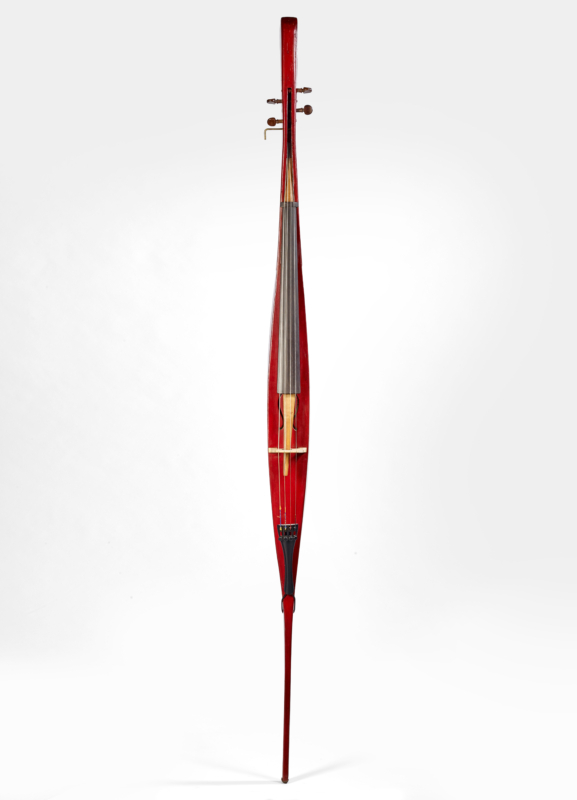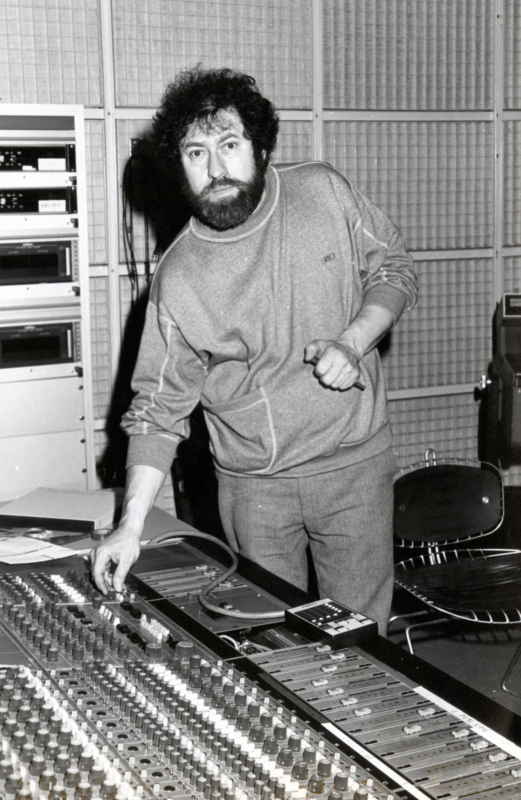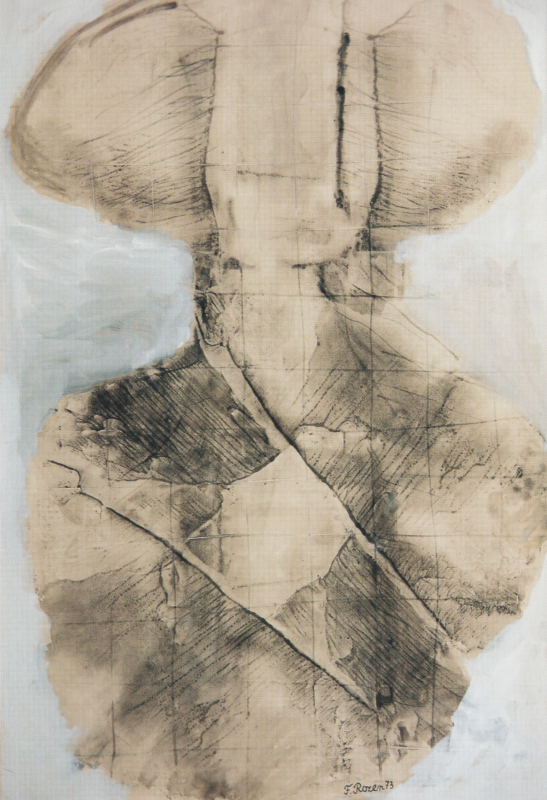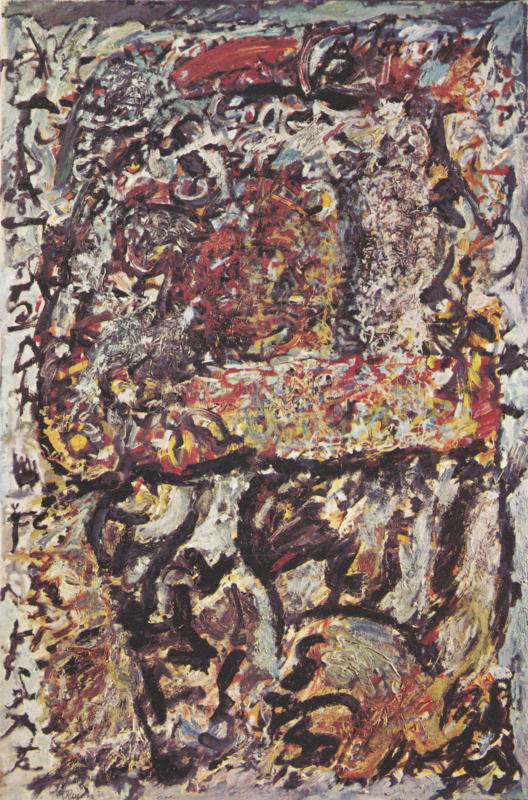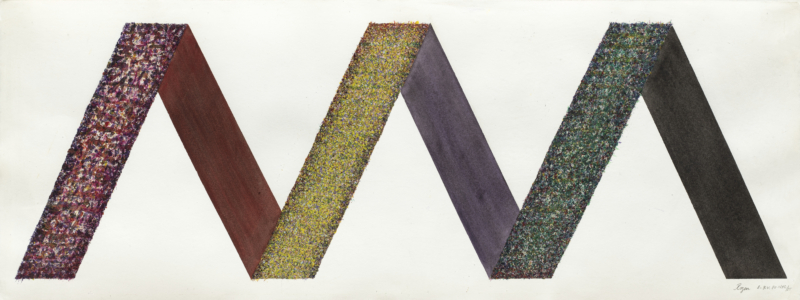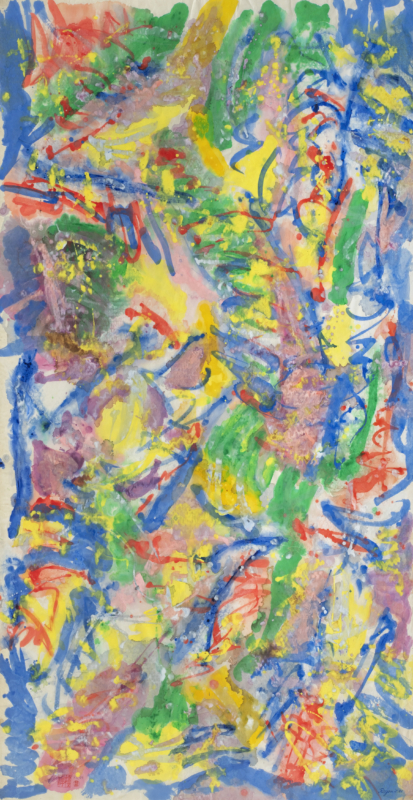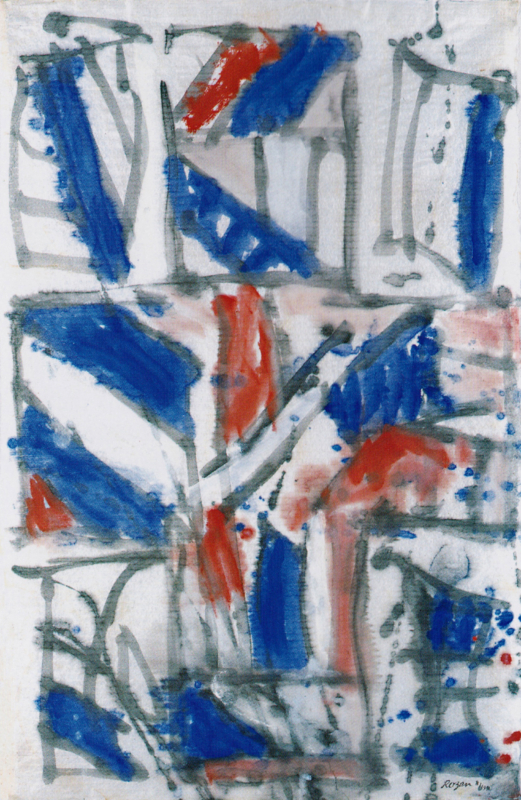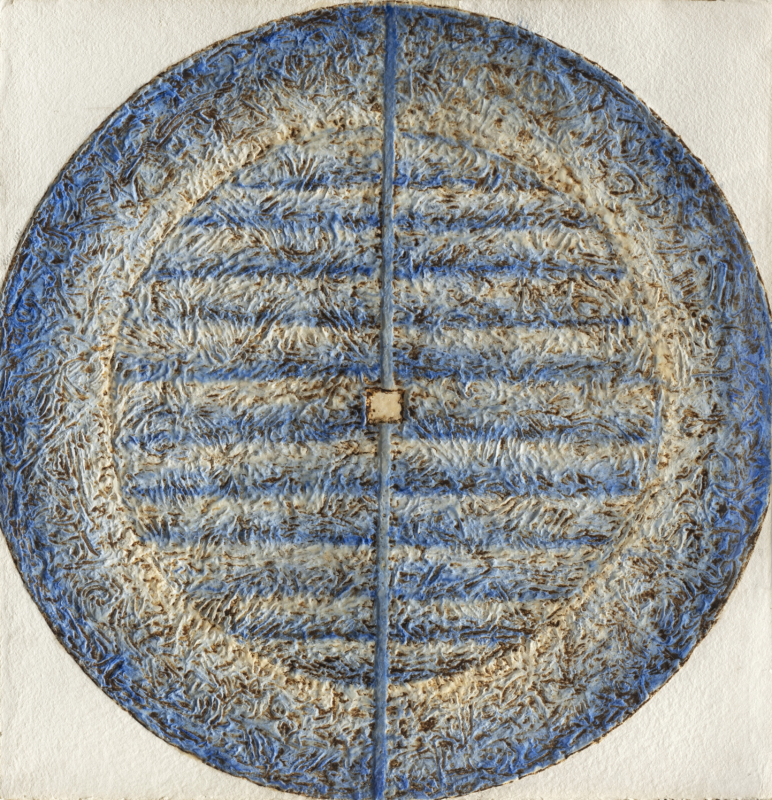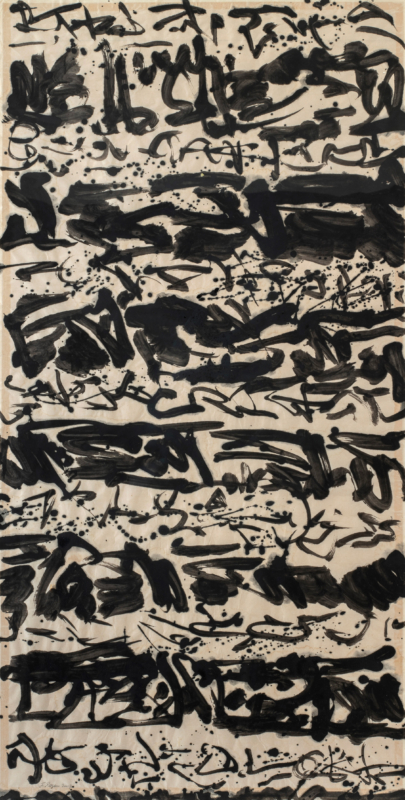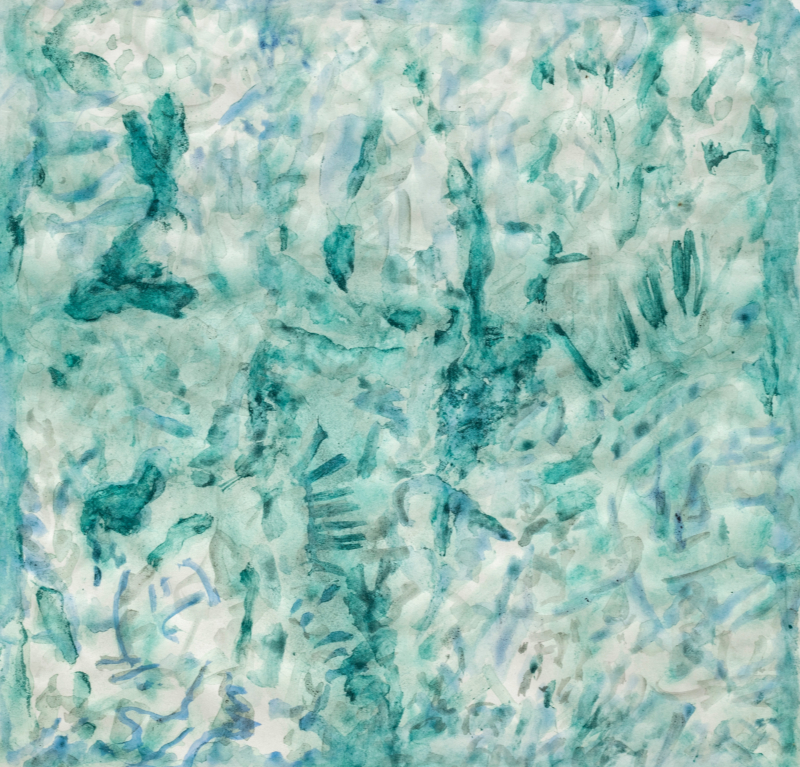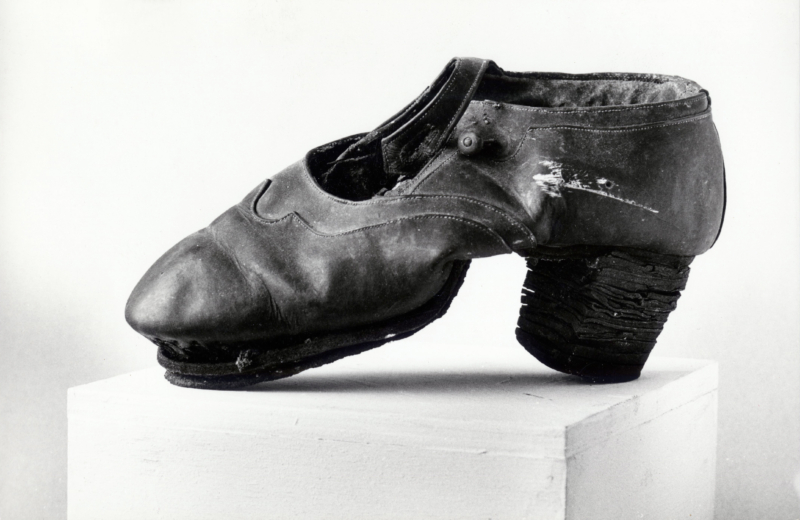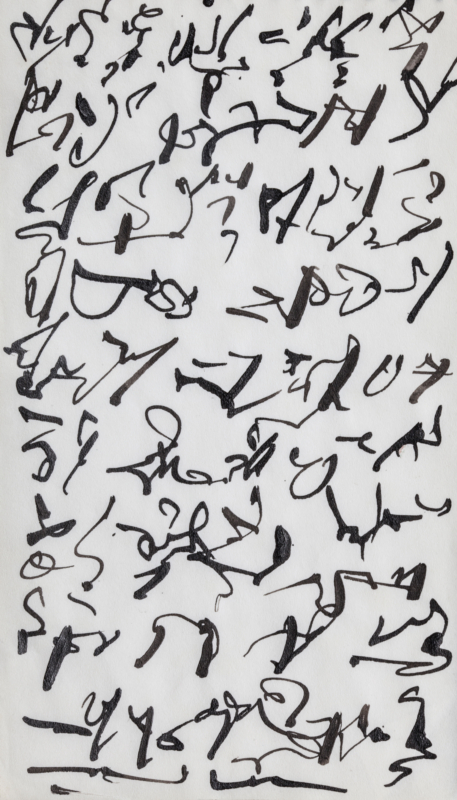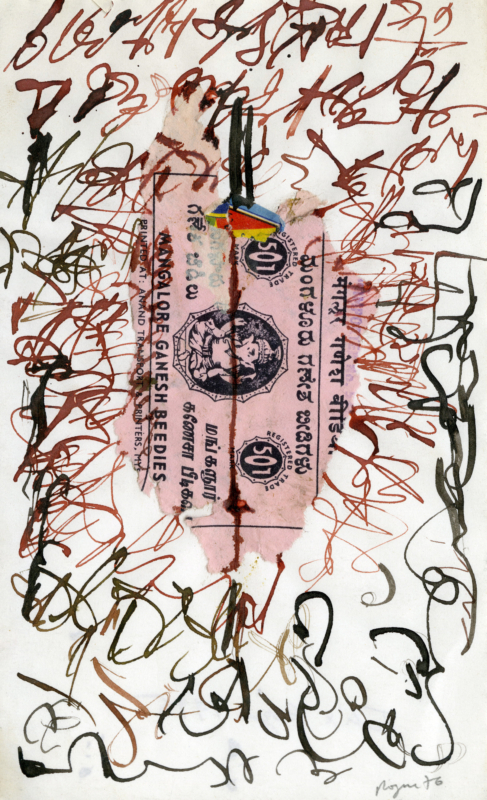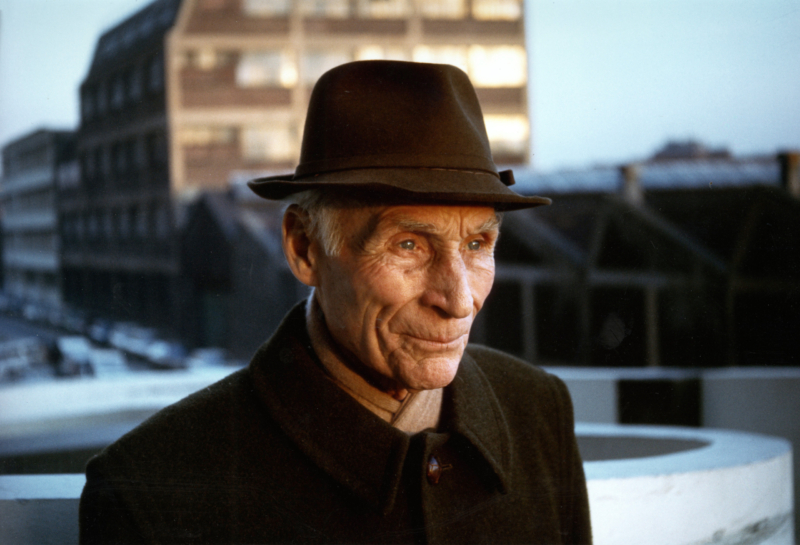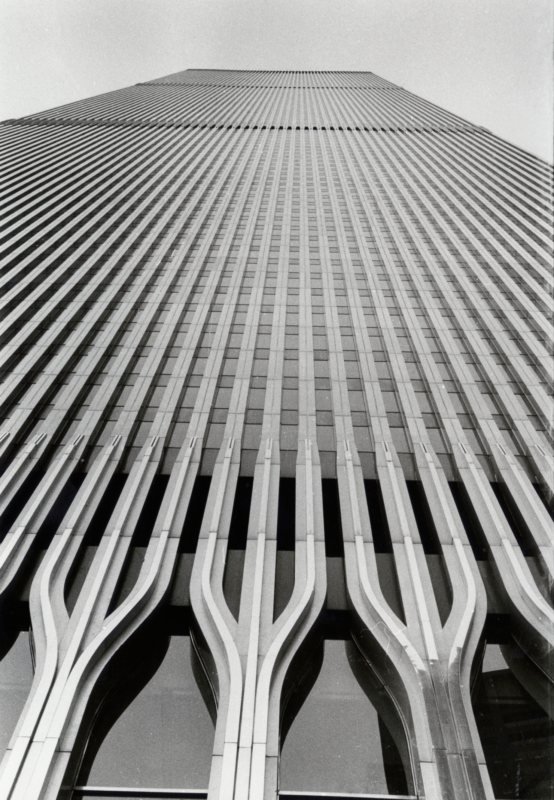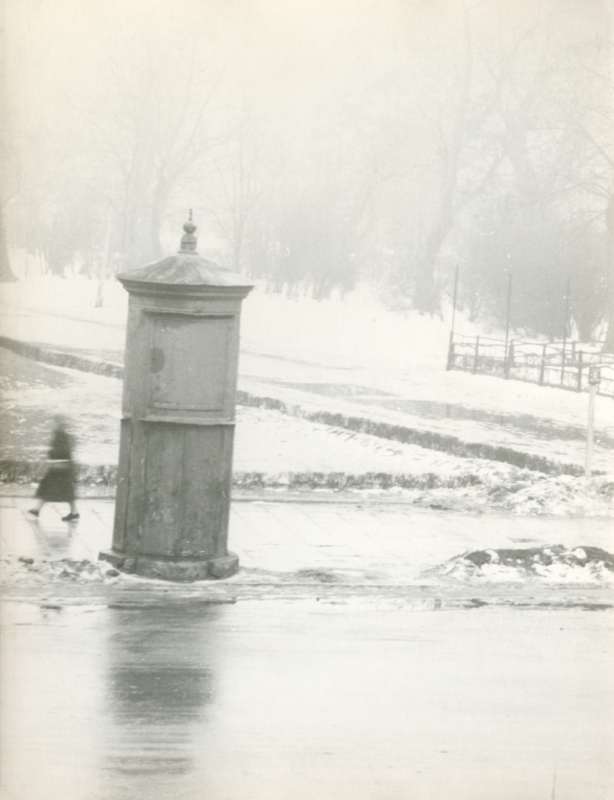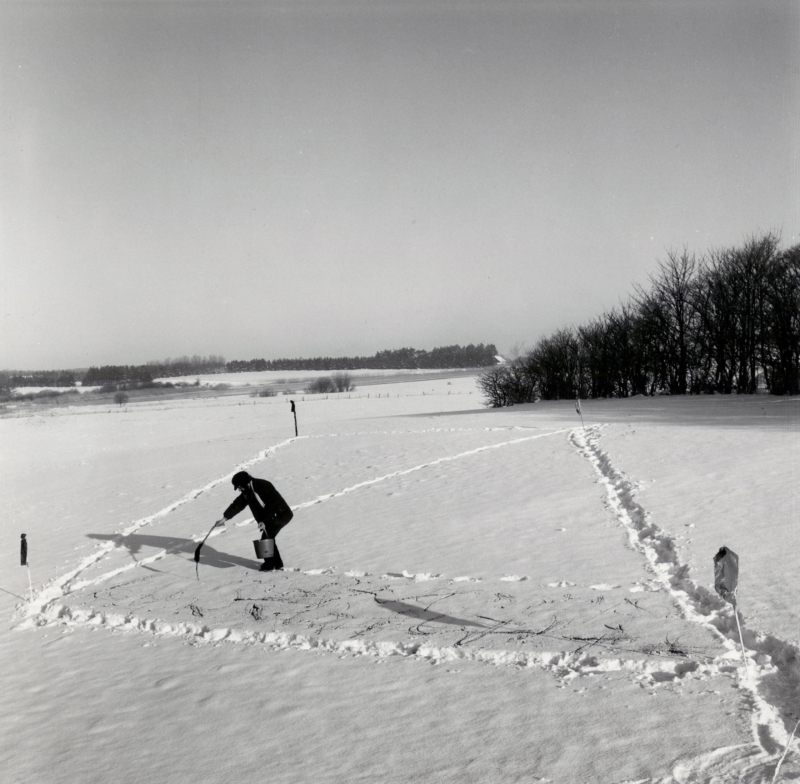Uncertain Opus (1981)
Music
Uncertain Opus was commissioned by Jean-Yves Bosseur for the Intervalles ensemble. Felix Rozen described it as follows: “Composed for six instruments, this work lasts 9 minutes divided into sections of 15 seconds. Each sheet is a sequence equal to 1 minute. At the top of the album [an original edition of 47 copies, including 8 signed and numbered] is a silkscreen that is the result of the superposition of the 9 sequences or minutes.”
“Uncertain Opus marks the beginning of deliberate research at the intersection of music and painting,”
writes Gérard Sourd in Nouvelles de l’Estampe.
“The relationship between the arts is essential for Rozen because ‘painting is putting your feelings to music.’ Inscribed in the material, his music isn’t, however, frozen because it does not stop at the level of his individual creation. [Rozen] invites any musician to give his own interpretation of his work which then becomes multiple. Indefinitely renewable by everyone, the music thus keeps its ephemeral and immaterial character, its plastic and graphic creation proffering a vision as opposed to a notion. Wouldn’t Rozen thus have found the art of remaining eternal?”
analyzes Christine Laloue, curator at the Musée de la musique in “Felix Rozen at the Musée de la musique,” in 2021.
Uncertain Opus was commissioned by Jean-Yves Bosseur for the Intervalles ensemble. Felix Rozen described it as follows: “Composed for six instruments, this work lasts 9…
Uncertain Opus was commissioned by Jean-Yves Bosseur for the Intervalles ensemble. Felix Rozen described it as follows: “Composed for six instruments, this work lasts 9 minutes divided into sections of 15 seconds. Each sheet is a sequence equal to 1 minute. At the top of the album [an original edition of 47 copies, including 8 signed and numbered] is a silkscreen that is the result of the superposition of the 9 sequences or minutes.”
“Uncertain Opus marks the beginning of deliberate research at the intersection of music and painting,”
writes Gérard Sourd in Nouvelles de l’Estampe.
“The relationship between the arts is essential for Rozen because ‘painting is putting your feelings to music.’ Inscribed in the material, his music isn’t, however, frozen because it does not stop at the level of his individual creation. [Rozen] invites any musician to give his own interpretation of his work which then becomes multiple. Indefinitely renewable by everyone, the music thus keeps its ephemeral and immaterial character, its plastic and graphic creation proffering a vision as opposed to a notion. Wouldn’t Rozen thus have found the art of remaining eternal?”
analyzes Christine Laloue, curator at the Musée de la musique in “Felix Rozen at the Musée de la musique,” in 2021.
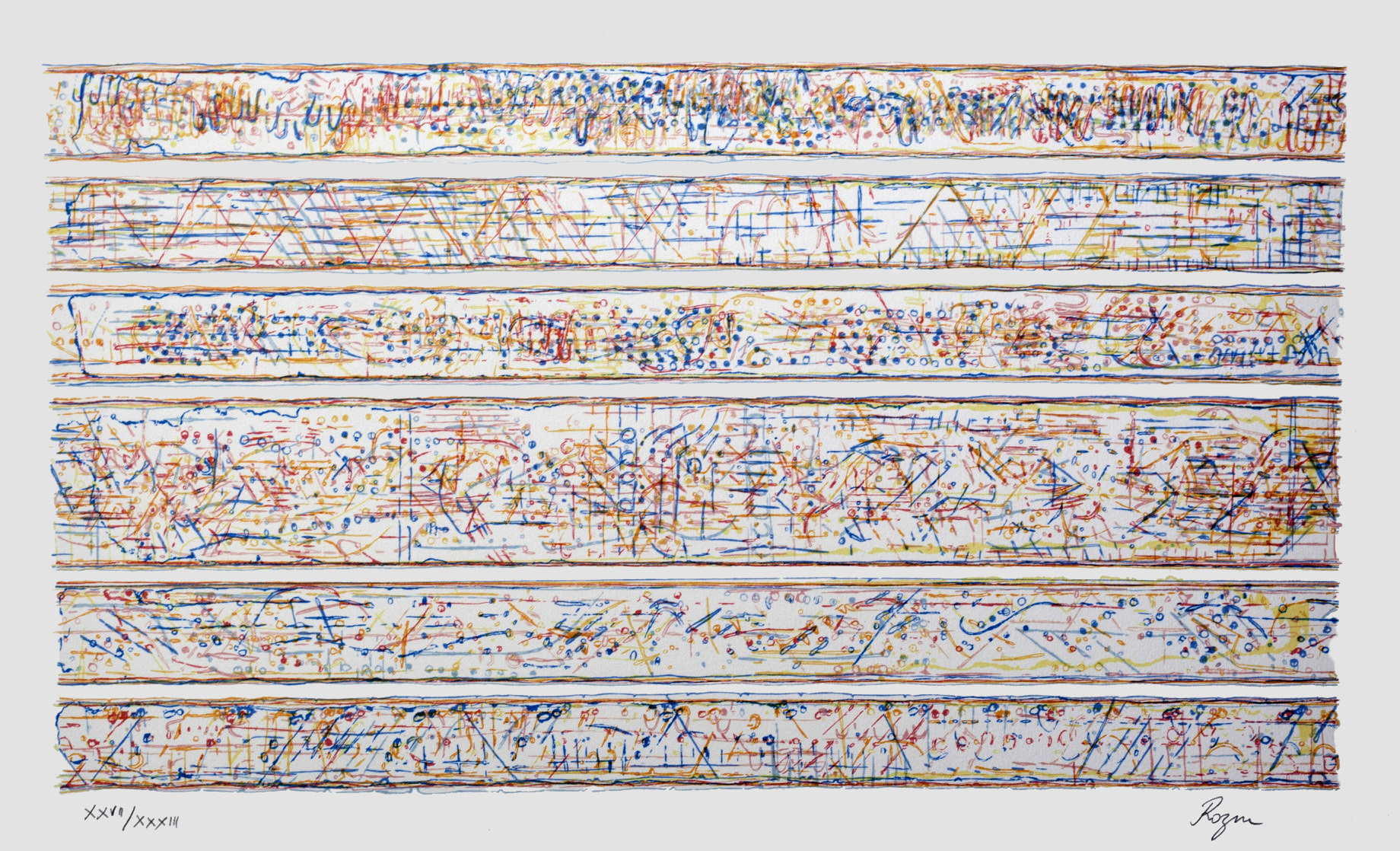
Uncertain Opus, 1981,
graphic score, 17 × 25 in. The album’s first sheet is a silkscreen resulting from the superposition of 9 one-minute sequences.
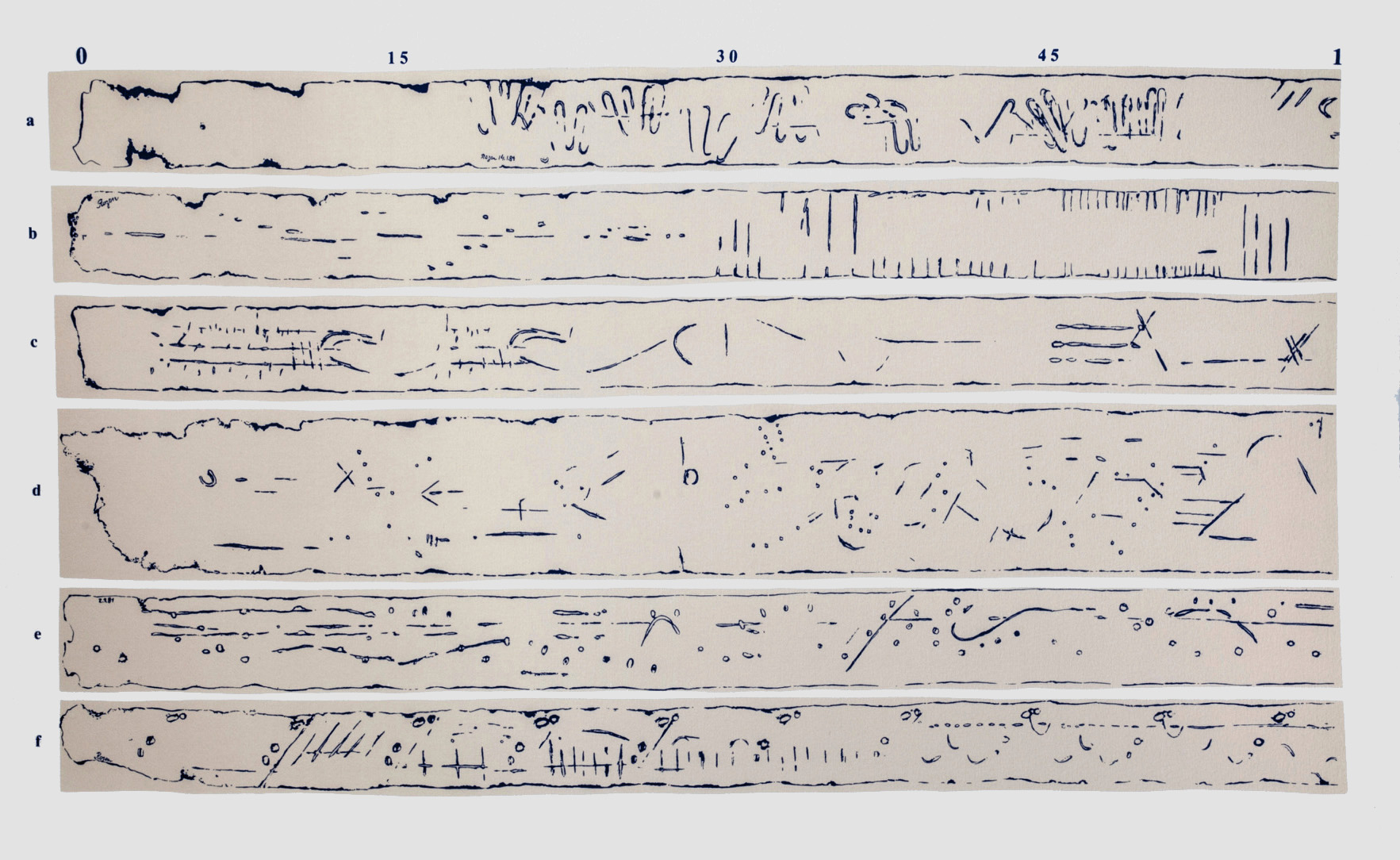
Uncertain Opus, 1981. First one-minute sequence.
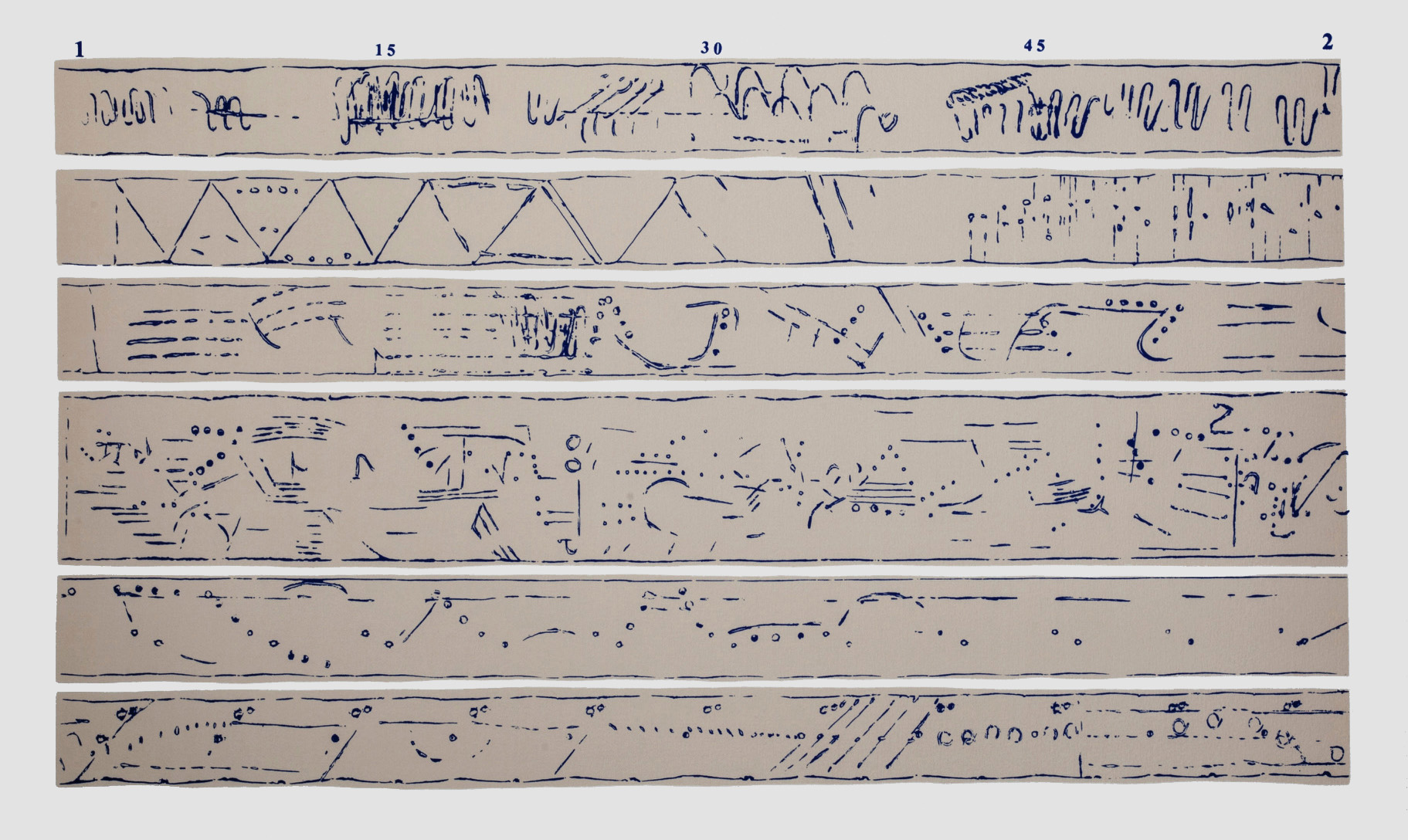
Uncertain Opus, 1981. Second one-minute sequence.
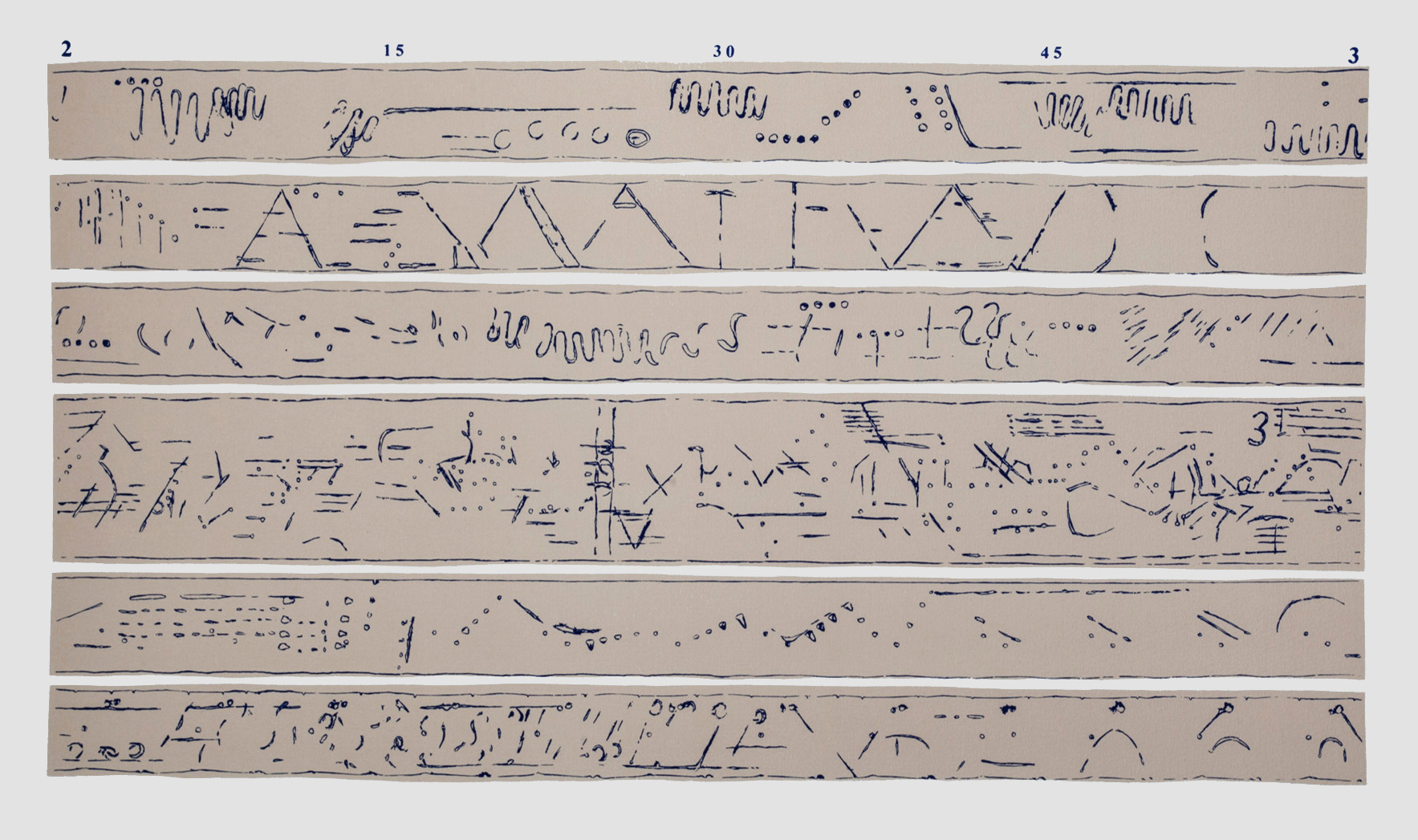
Uncertain Opus, 1981. Third one-minute sequence.
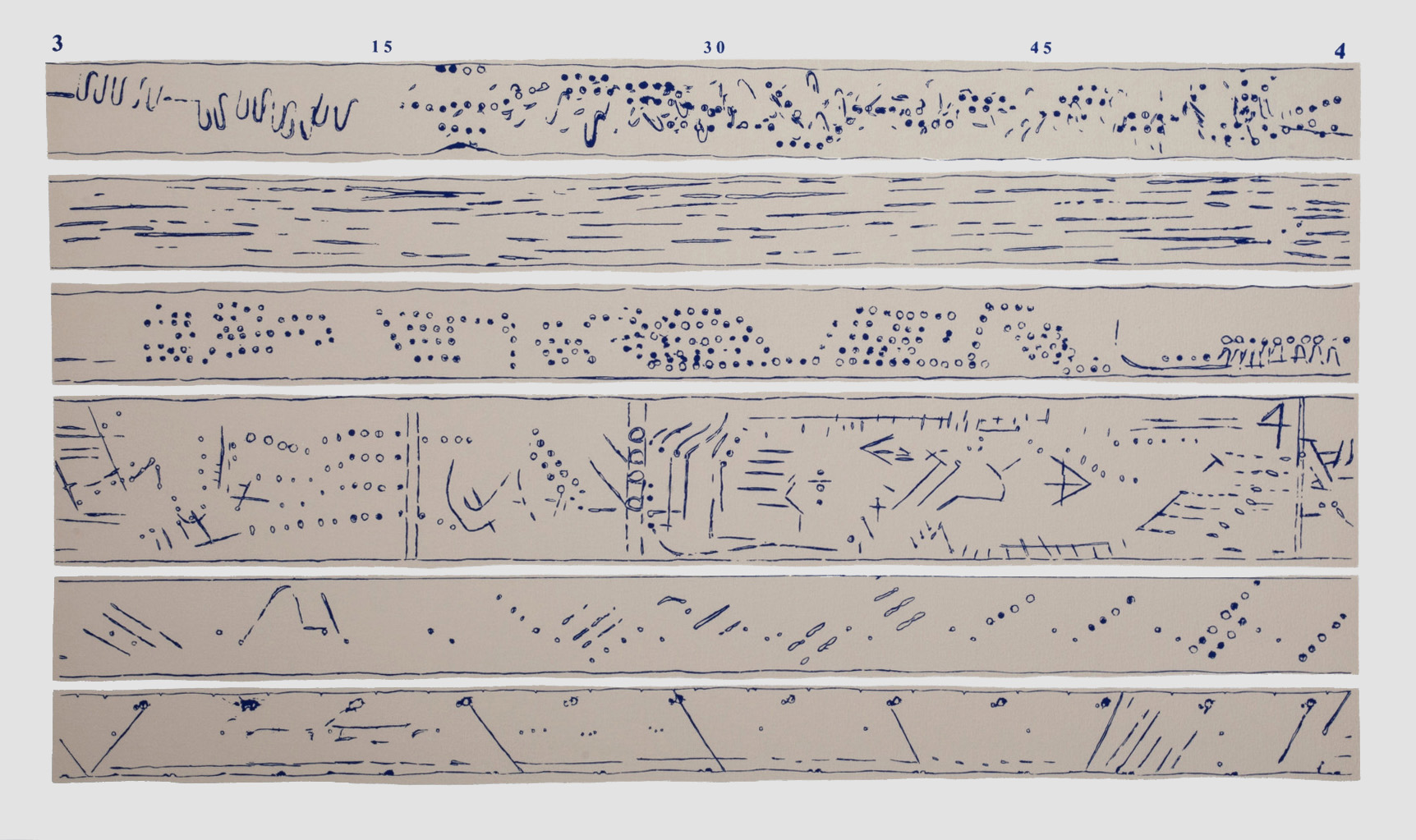
Uncertain Opus, 1981. Fourth one-minute sequence.

Uncertain Opus preparatory tools, Musée de la musique, Paris, photo Claude Germain.

Uncertain Opus tracing paper (detail), Musée de la musique, Paris, photo Claude Germain.



